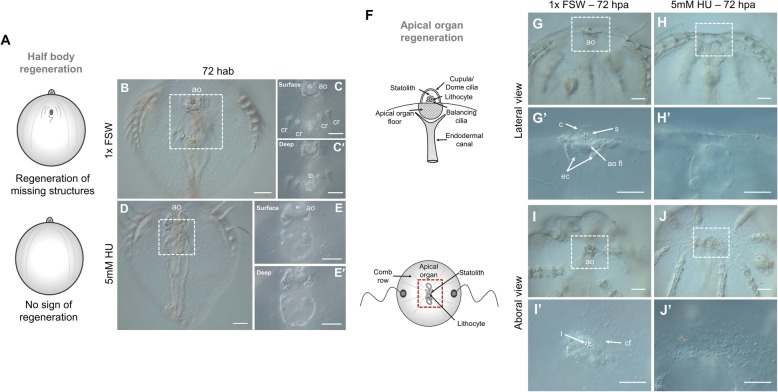Fig. 11.
Ctenophore regeneration does not occur in the absence of cell proliferation. A Schematic representation of the regeneration state of cydippids shown in the panels on the right. Cartoons correspond to lateral views of the cydippid’s body bisected in half through the oral-aboral axis showing the cut site in the first plane. B–E’ DIC images of bisected cydippids in a lateral view at 72 hab. The type of treatment corresponding to each panel is listed to the left of the rows. Dotted line rectangles in B and D show the area corresponding to higher magnifications on the right. Magnifications show surface (top) and deep (bottom) planes. Note that the wound site in treated cydippids is covered by a continuous epithelium but there is no sign of formation of missing structures. F Schematic representation of the apical sensory organ in lateral (top) and aboral (bottom) views. Red dotted rectangle at the bottom cartoon delimits the apical organ area shown in the images on the right. G–J’ DIC images of cydippids in which the apical organ was amputated at 72 hpa orientated in lateral (G–H’) and aboral (I–J’) views. The type of treatment corresponding to each panel is listed to the top of the columns. Dotted line rectangles in G, H, I, and J show the area corresponding to higher magnifications on the bottom. Note that treated cydippids show aggregation of cells around the surface of the wounded area although none of the missing apical organ structures are formed. Scale bars = 100 μm. Abbreviations: hab hours after bisection, hpa hours post amputation, ao apical organ, cr comb row, tb tentacle bulb, s statolith, c cupula, ao fl apical organ floor, ec endodermal canal, l lithocyte, cf ciliated furrow

